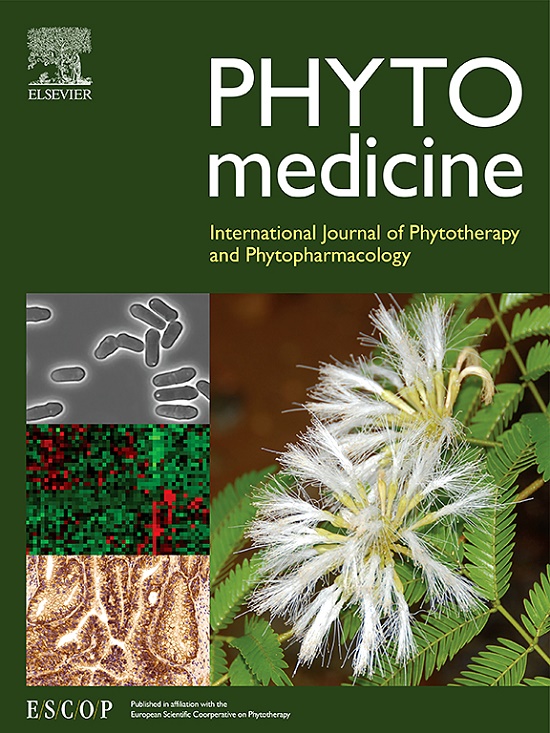Insights into Q-marker of Shensong Yangxin capsule in treating cardiac arrhythmias based on a linear substitution strategy in quantification of multiple components
IF 6.7
1区 医学
Q1 CHEMISTRY, MEDICINAL
引用次数: 0
Abstract
Background
The concept of a Quality marker (Q-marker) has emerged as a crucial tool for ensuring the safety and efficacy of Traditional Chinese Medicine (TCM) formulas. However, significant challenges remained in the identification and practical application of Q-marker, particularly due to the scarcity of reference standards.
Purpose
This study aimed to achieve a multidimensional integration of chemical profiling, target tissue distribution and in vivo high-throughput screening model to effectively identify the Q-marker of Shensong Yangxin Capsule (SSYX) and propose a linear substitution strategy for the quantification of multiple components.
Methods
First, the chemical constituents of SSYX were detected and systematically characterized using UHPLC/Q-TOF MS. Next, through heart distribution study, high-exposure components in vivo were identified after the oral administration of SSYX. Third, a high-throughput arrhythmia zebrafish model was employed to further screen for key constituents. Finally, potential Q-marker were selected by integrating the aforementioned studies, and a quantification method for the Q-marker was developed using UHPLC-TQ-MS.
Results
The results of chemical profiling, heart tissue distribution and anti-arrhythmic activities were integrated into four properties: specificity, traceability from prescription to in vivo, effectiveness and prescription compatibility, which led to the identification of 30 ingredients as potential Q-marker of SSYX. Subsequently, an external standard method (ESM) was developed for these 30 components and applied to the analysis of 10 commercial batches of SSYX. In addition, the feasibility of multi-marker detection via a linear substitution method (LSM) was explored for the first time using SSYX as a case study for method development, based on the stability of linear equations of the compounds in single standard solutions and multi-component mixed standard solutions. The simultaneous quantification of 30 components in SSYX was achieved by employing two linearly stable substances, greatly reducing the amount of standard substances used while maintaining measurability and convenience. A comparison of LSM and ESM revealed no significant difference in the component contents calculated by the two methods, with relative errors within ± 4 %.
Conclusion
Our results suggested that 30 ingredients, including six key elements, could be considered as Q-marker of SSYX. Moreover, the LSM strategy offered a novel approach for developing environmentally friendly and convenient methods for the quality control of multi-index components in TCM formulas.

求助全文
约1分钟内获得全文
求助全文
来源期刊

Phytomedicine
医学-药学
CiteScore
10.30
自引率
5.10%
发文量
670
审稿时长
91 days
期刊介绍:
Phytomedicine is a therapy-oriented journal that publishes innovative studies on the efficacy, safety, quality, and mechanisms of action of specified plant extracts, phytopharmaceuticals, and their isolated constituents. This includes clinical, pharmacological, pharmacokinetic, and toxicological studies of herbal medicinal products, preparations, and purified compounds with defined and consistent quality, ensuring reproducible pharmacological activity. Founded in 1994, Phytomedicine aims to focus and stimulate research in this field and establish internationally accepted scientific standards for pharmacological studies, proof of clinical efficacy, and safety of phytomedicines.
 求助内容:
求助内容: 应助结果提醒方式:
应助结果提醒方式:


